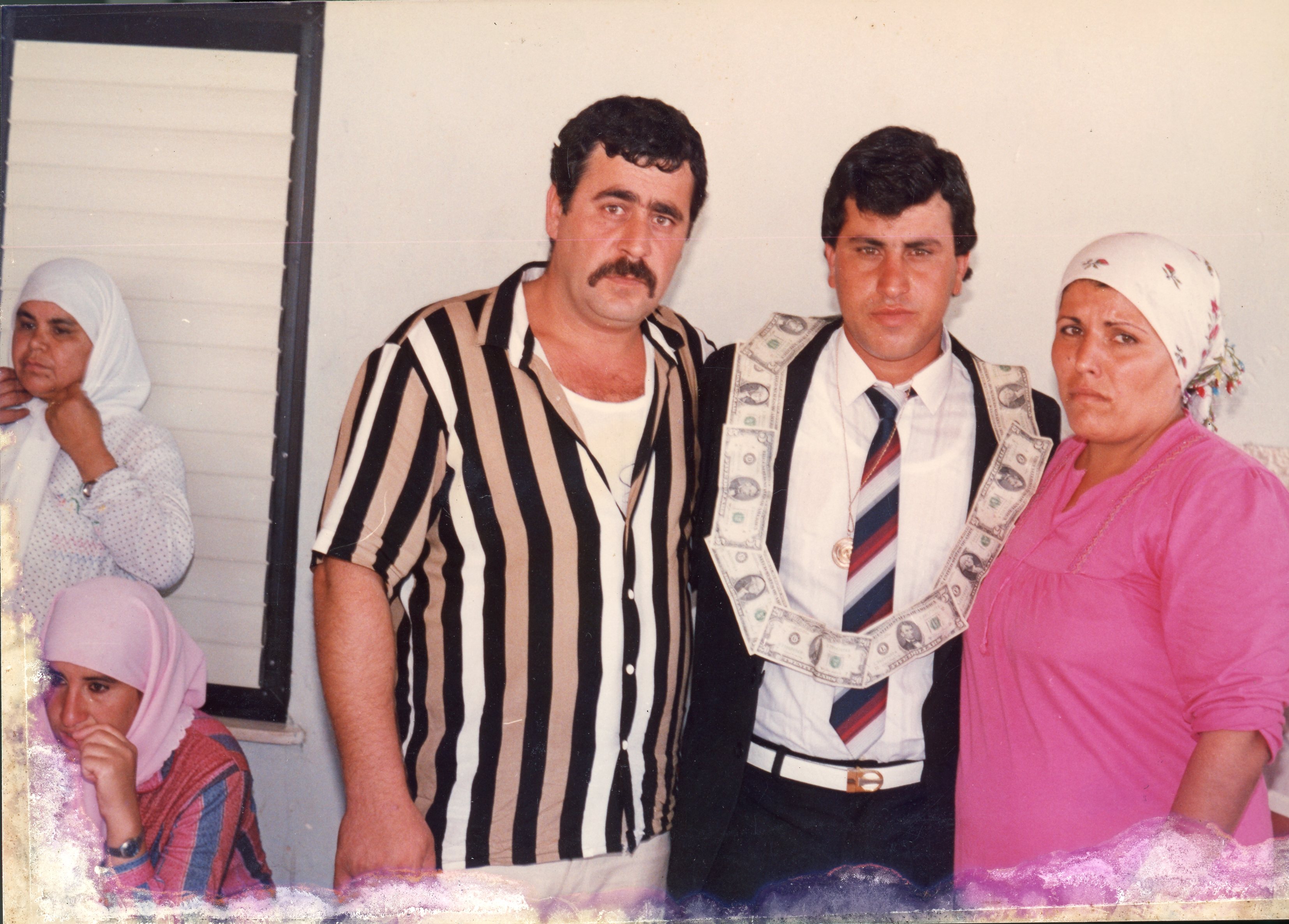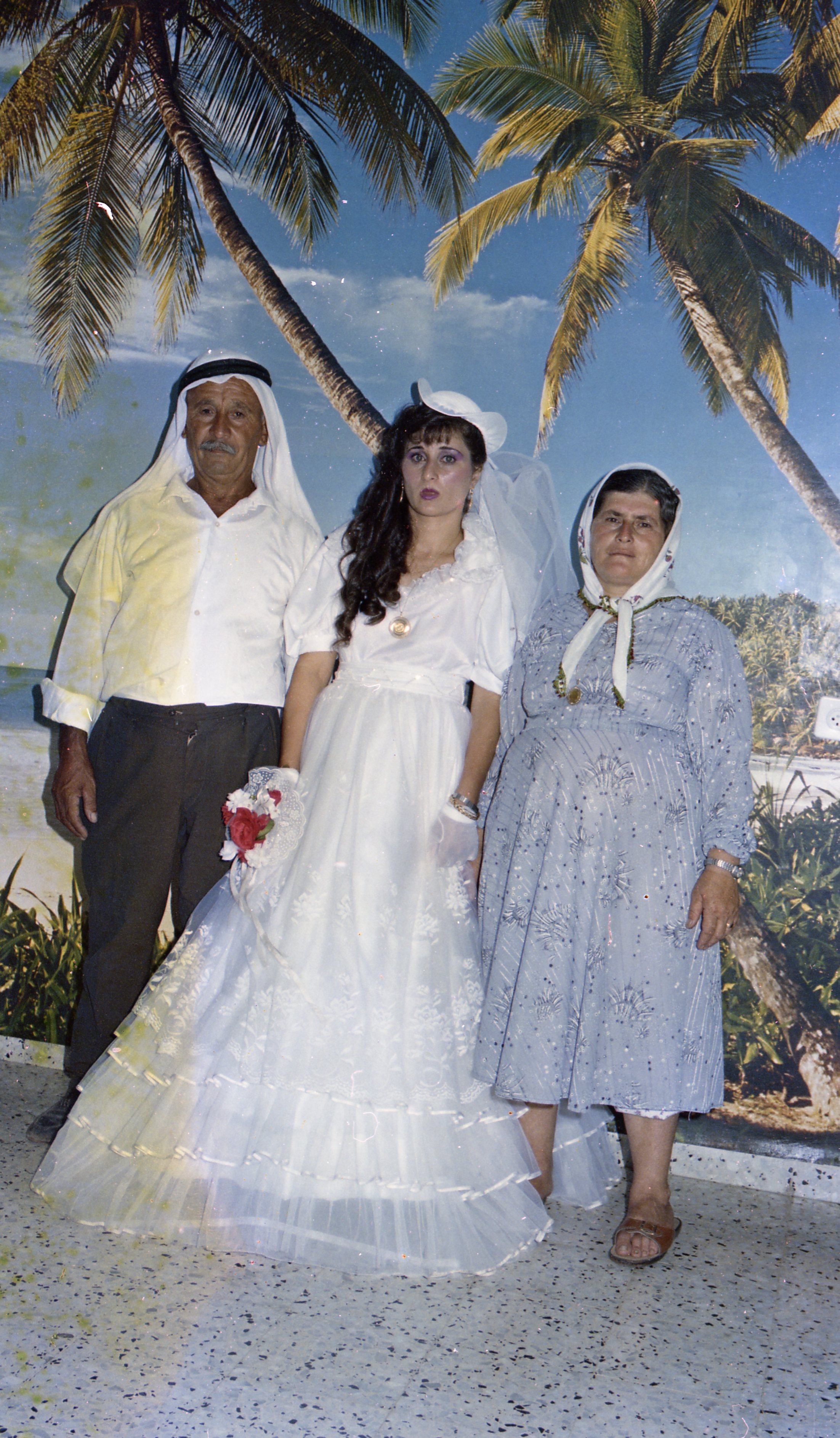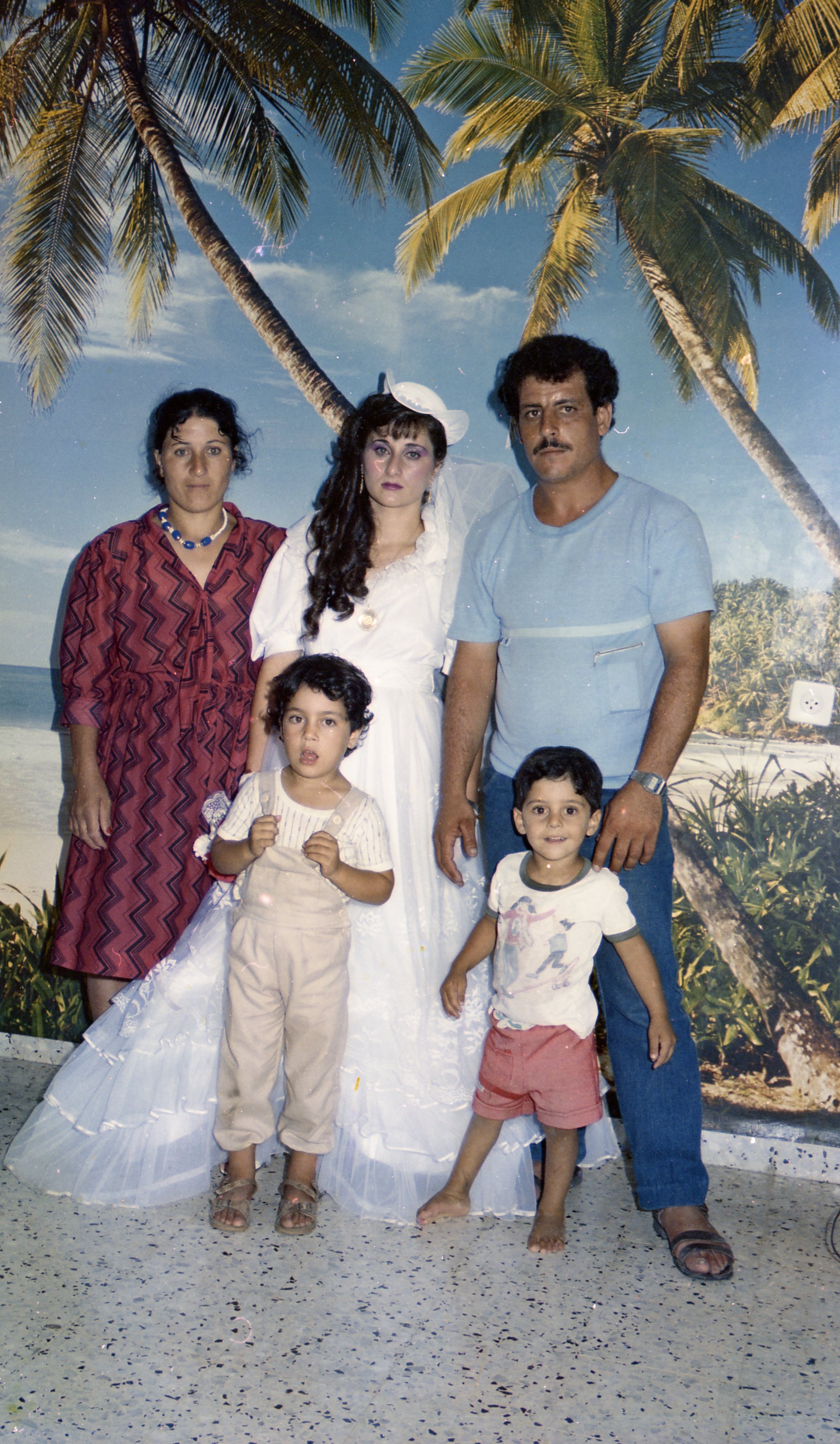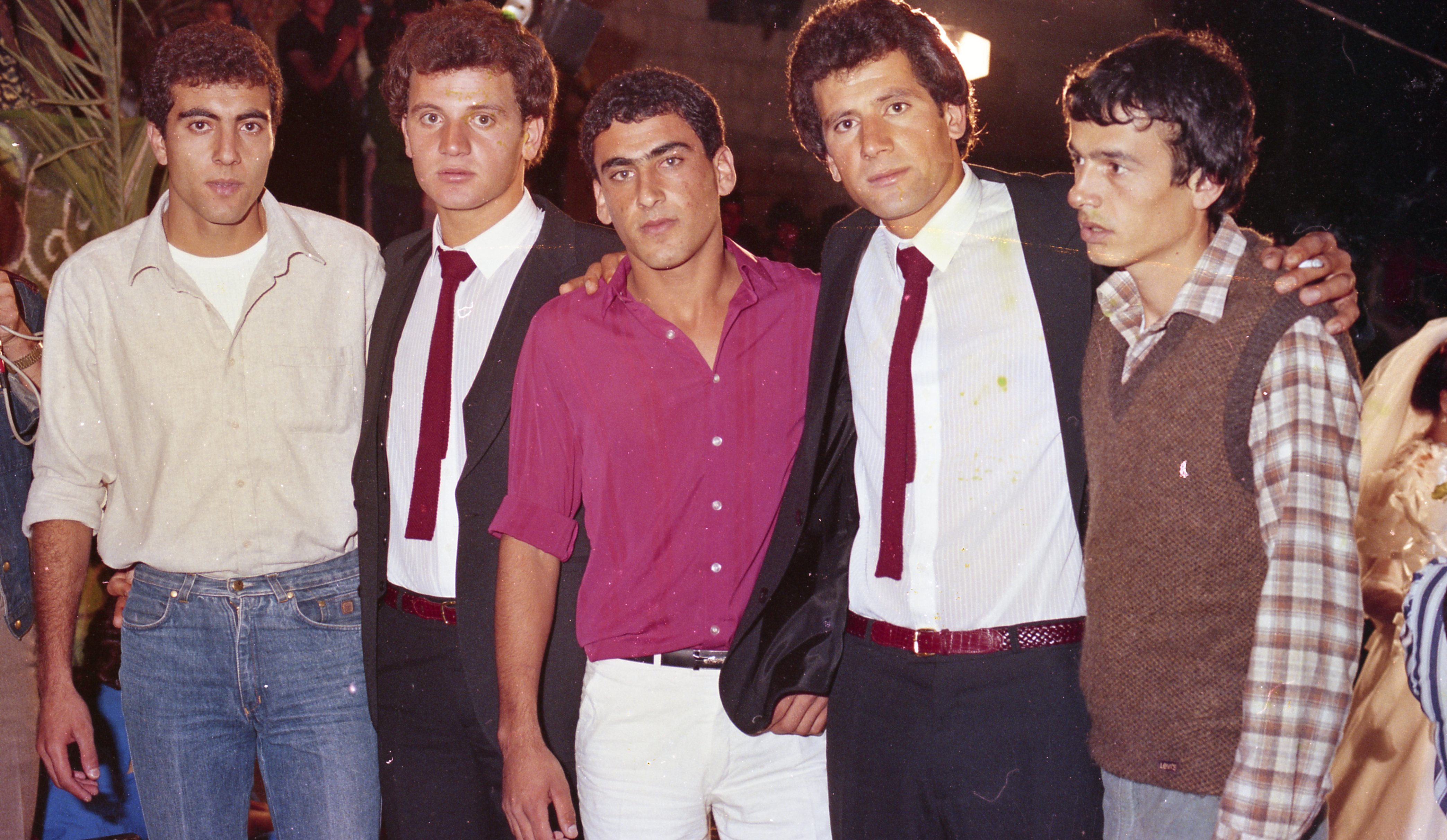In Conversation:
Al-Ameen Archive Founder, Raya Manaa
Al-Ameen Archive is an archive project of Raya Manaa’s father’s career in photography that extended more than 40 years. Between the 1950s and 1990s, Mahmoud Manaa worked as an event photographer, focusing on weddings and engagement parties in the Galilee in northern Palestine. He documented more than 2,500 weddings, and many indigenous and religious ceremonies that took place in the marginalized and peripheral areas of the Galilee, an area known for its pluralism and rich religious and ethnic diversity.
︎ How did you start the Al-Ameen Archive project?
My father, Mahmoud Manaa, was a photographer and used to have a photo studio called Studio Al-Ameen. He ran the business and was mainly a wedding photographer but also took family portraits on the side. I found his work in our basement at home––first just a small box with a few negatives and prints. I kept searching and found around 10,000 negatives and prints, which was huge! It's an enormous archive. I assume it'll take me at least three years to scan and organize it.

A zaffeh in Palestine in the late 80s / early 90s
︎ Would you consider Studio Al-Ameen a physical or mobile studio?
The studio was running out of my family's living room––it was completely occupied, they didn't even have a place to host people. There was lighting, chemicals for film development, and camera equipment everywhere. Everything was developed in the house. I think 90 percent of what I've seen in the archive was shot in the Galilee, mainly weddings. The Galilee area contains around seven villages, but he'd also visit Jerusalem, Nablus, the Naqab, and Druze areas. My parents are from Majd Al-Kurum in the Galilee, about a 10-minute drive from the Akka seashore.
︎ What years was Studio Al-Ameen operating?
He started doing freelance wedding shoots in the 1950s and opened the studio in '61 or '62. He was self-taught, no courses. I remember him telling me he burned a lot of films in the learning process, a lot of overexposure and underexposure. The studio shut in the mid-90s, according to the dates that I've found on negatives. My dad doesn't remember well anymore. He's suffering from Alzheimer's and it's hard to get accurate information from him.



︎ Was there a photo you found in the archive that made you certain it was important and needed to be safe kept?
The key picture was one from a hammam el arees* of the three guys taking a shower together. When I saw the photo I was like, there's something queer under this archive's surface, and I need to look through it and do more research. There were a lot of things that amazed me about this archiving project––all the cliche poses, photographs of a groom holding a bride in his hand. We refer to this photography style as nouf, which is couples photography. The aesthetic aspect of these pictures is something that I think is worth researching, archiving, and preserving. We have a gap in Palestinian archiving practices in general. You either get the Nakba photographs or pre-Nakba photographs, as if these are of only importance to the Palestinian story. As if what happened after that wasn't important. We don't have enough pictures and enough archive materials to show us what happened during the 60s, 70s, and 80s. We don't have enough representation in Palestinian storytelling in general, especially in the '48 areas. Some people don't even know that two million Palestinians live within Israel. We have something to represent, and I think it's important to share through these images, these weddings, and this archive.
*Hammam el arees translates to groom's shower, a pre-wedding tradition held across Palestine.
︎ In terms of Palestinian queerness, what have you learned through this archive so far?
I can say that in all the hammam el arees photos that I've found, the queer elements are there and obvious; images of three guys taking a shower together completely naked, many pictures of men holding hands. I've only scanned three or four packs of negatives of different hammam el arees so far, but I'm sure I'm going to find the same gestures and poses as I move forward. Hammam el arees is all about the groom's friends helping him shower and get groomed. You don't see gestures like this today. I think because Palestinian society is more aware of the different sexual identities, they've become more sensitive to what different gestures may suggest, and they try to avoid it.






Two brothers celebrating their wedding day in the Galilee in the early 80s
︎ Your collection is refreshing and exciting.
It's a lot. There are also amazing collections I've found of family portraits. People couldn't afford to buy cameras and film, so they used to call a photographer to come to their house and shoot one film roll, 36 pictures, for the family. There's one family's home that stuck with me. The interior design, the amazing wallpapers––wallpaper of Canada and stuff that has nothing to do with Palestine––inserted inside the house. Snow wallpapers.
︎ How has wedding photography changed or stayed the same since Studio Al-Ameen was active?
That's an interesting question, actually. People are still taking nouf photos, and it's still one of the most important stages of the wedding. It's the only couple of hours that the bride and groom have the opportunity to take pictures alone, without the whole family and mess around them. We do have a lot of the same cliche poses in nouf photos, but maybe they're conducted in a different and more modern way. I follow local photographers and know that there are specific types and styles of wedding photography that people want in Palestinian society. There are still some cliche poses and a lot of similar styles across the wedding photography couple shoots. It's different, they aren't going to put the bride on the groom's palm as a miniature, but they do other cliche stuff.


Ali Abu Roumhain’s wedding in the mid-80s, an example of a nouf (couple’s) photo shoot
︎ Do wedding ceremonies and the traditions involved still carry the same value and importance for new generations of women in Palestinian society?
I've been thinking about this and trying to investigate more through this archive. Something that's touched me the most is talaat al aroos pictures, the tradition of when a bride leaves her parent's house to the groom's home. This used to be one of the most emotional stages of Palestinian weddings––you'd see everyone hysterically crying with these big red eyes, as if the bride is moving to Canada. Even the father is crying. It seems like this ceremony represents the bride leaving one chapter of her life, leaving her parents, and moving to another house where she's someone else's responsibility. She's not her father's daughter anymore. A lot has changed in the past 20 to 30 years, and it's amazing to see how women are treated so differently after such a short period of time. Talaat al aroos is not that emotional today, especially for the brothers and fathers. Even though the event holds less weight, brides are still taking medication to calm themselves down for the talaat al aroos––I've heard that from relatives and friends who got married. It still symbolizes something very emotional and hard. There's been a shift in mentality for the bride and her family, though. Talaat al aroos is now something that is anticipated, something that should happen––that the woman must leave the house eventually. As a single, 30-year-old Palestinian woman, I hear talk of this all the time. That I'm not supposed to be at my parent's home or be attached to them at this age, that this is the path all Palestinian women take. They should get married in their early or mid-20s. There used to be this strong bond between the bride and the father, and this has changed. The normalized, relaxed intimacy between men––without all these reflections about the queer and sexual identity––has also changed. A lot of stuff has changed.

A women’s trip to Akka in the mid-80s
︎ Please continue.
Almost all weddings were held in the center of the village 20 or 30 years ago. They used to block streets––of course, you're going to block the street when the whole village is busy with a wedding. This doesn't happen anymore. We've become a more separate and individualistic society. Now a family will leave their village for a wedding because we don't have this same community, or real connection between people, anymore. Weddings used to be way more fun. You would see the whole village participating and taking part. Some cleaning, some cooking. I think we have lost that too.

Mohammad Kenedi’s wedding in the mid-80s
︎ You can feel joy through the photographs.
Yes, totally. From the photos I've seen from between the 1960s and 1990s, there also used to be alcohol at every single wedding. I noticed these changes just by looking at my mom's older photos before investigating my father's archive. She used to wear clothes at my age that I wouldn't dare to wear today, extra small mini skirts and see-through tops. It was cool back then though, it was fine. Majd Al-Kurum, where my family is from, is a 100 percent Muslim village, but you'd still find alcohol at almost all weddings. People are still drinking in Majd Al-Kurum, for example, but you won't see alcohol at 80 percent of the weddings there. I find this really interesting. You expect that people become more open about these things with time, but what's happening with Palestinian society is exactly the opposite. Maybe for '48 Palestinians it has something to do with being part of the Israeli society because I do feel like people want to protect themselves more. I hear elders talking about how in mixed cities like Haifa and Akka it's harder for people to preserve their heritage and protect their community, the Muslim community, from whats happening around them and the Israeli society's effect on them.








Kamal and Kamil’s wedding in Bi’ina in the mid-80s
︎ Mahmoud Manaa used to photograph events and families across Palestine, from Jerusalem to the Naqab. From your observations of the archive, do wedding customs and decor change across the different regions of Palestine?
He used to take general street shots and landscapes in the Naqab area, but he wasn't a famous wedding photographer there. Even in Nablus and Jerusalem it was just street shots and landscapes, I haven't found and wedding photography by him in these areas. In the Galilee, though, if you look through the photos and compare a Muslim wedding to a Christian wedding it was the same (put the wedding ceremony at the church aside, everything was the same). The party at the house, the clothes, the drinking, talaat al aroos, hammam el arees. They all have the same ceremonies, and it all looks exactly the same.
︎ How do you see this archival project developing?
There are two main aspects I'm thinking about. One is more research-focused, the other artistic. Since I'm a visual researcher and not an anthropologist, I'd be glad to find a researcher who would write about the archive and weddings in the Galilee from the 60s to 90s. There is a lot to tell through this archive. I'd also love to see this archive projected in a gallery or museum. Think about this collection as a printed photo album, chapters dedicated to hammamat el arees and talaat al aroos.


Ali Mustafa’s hammam el aroos, or groom’s shower, in the mid-80s







